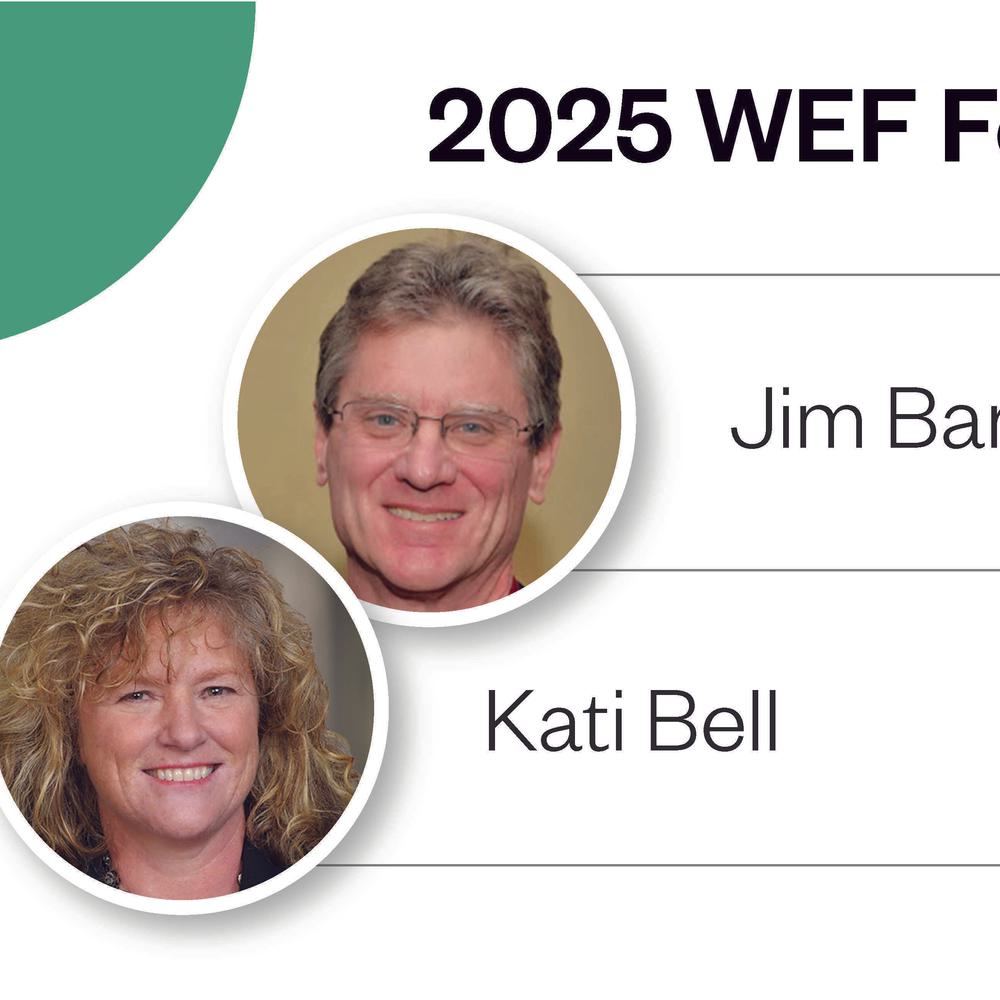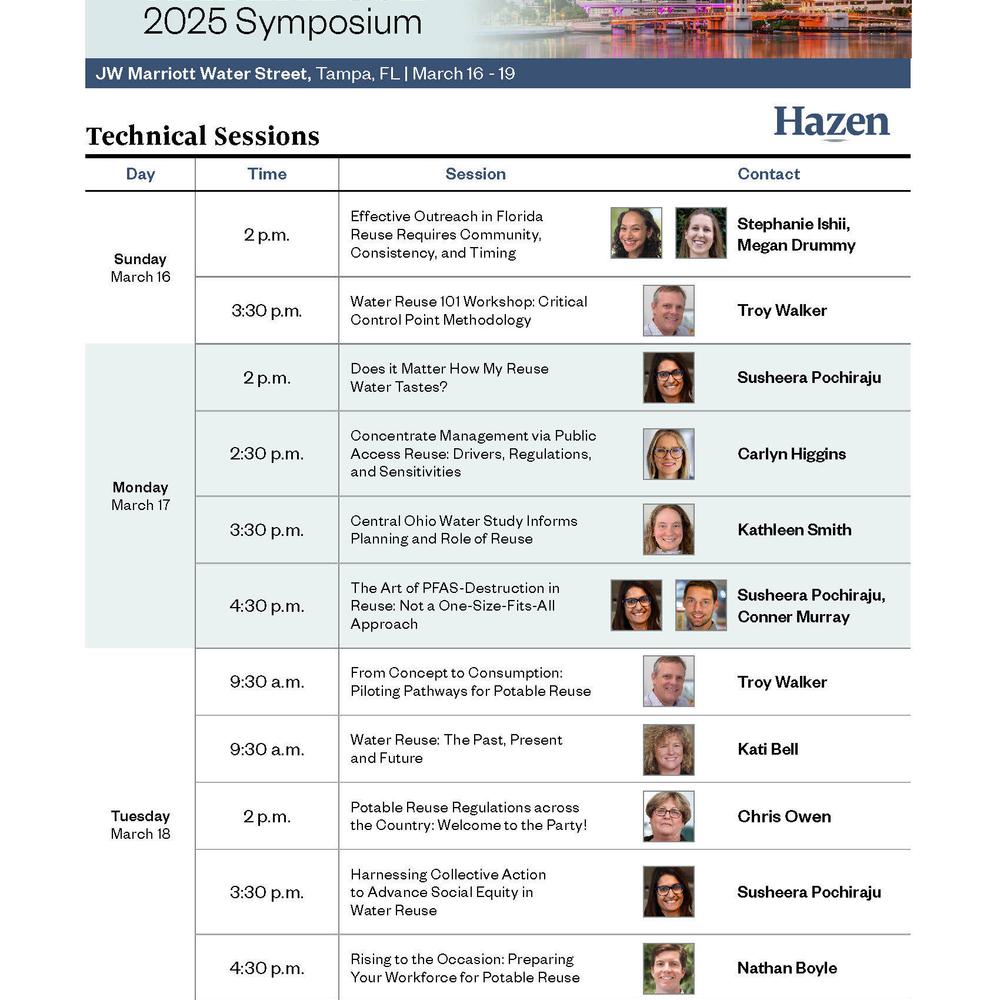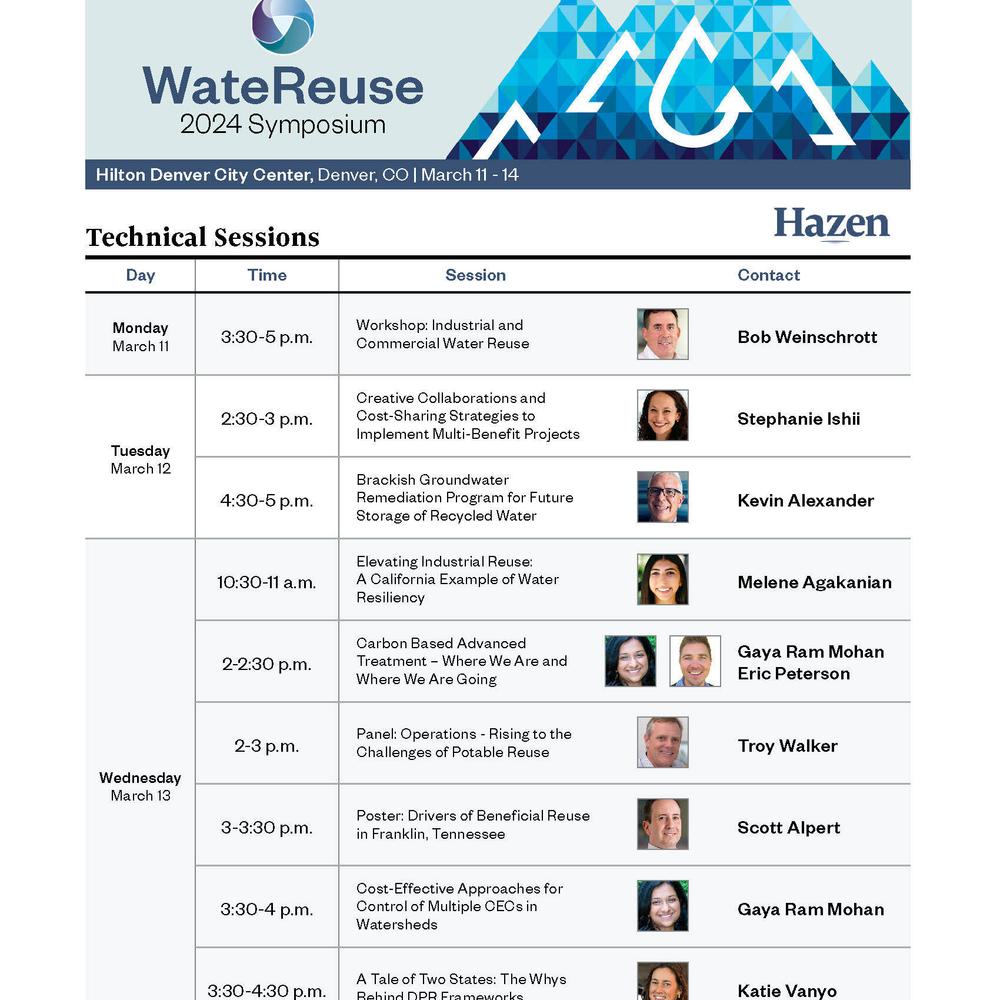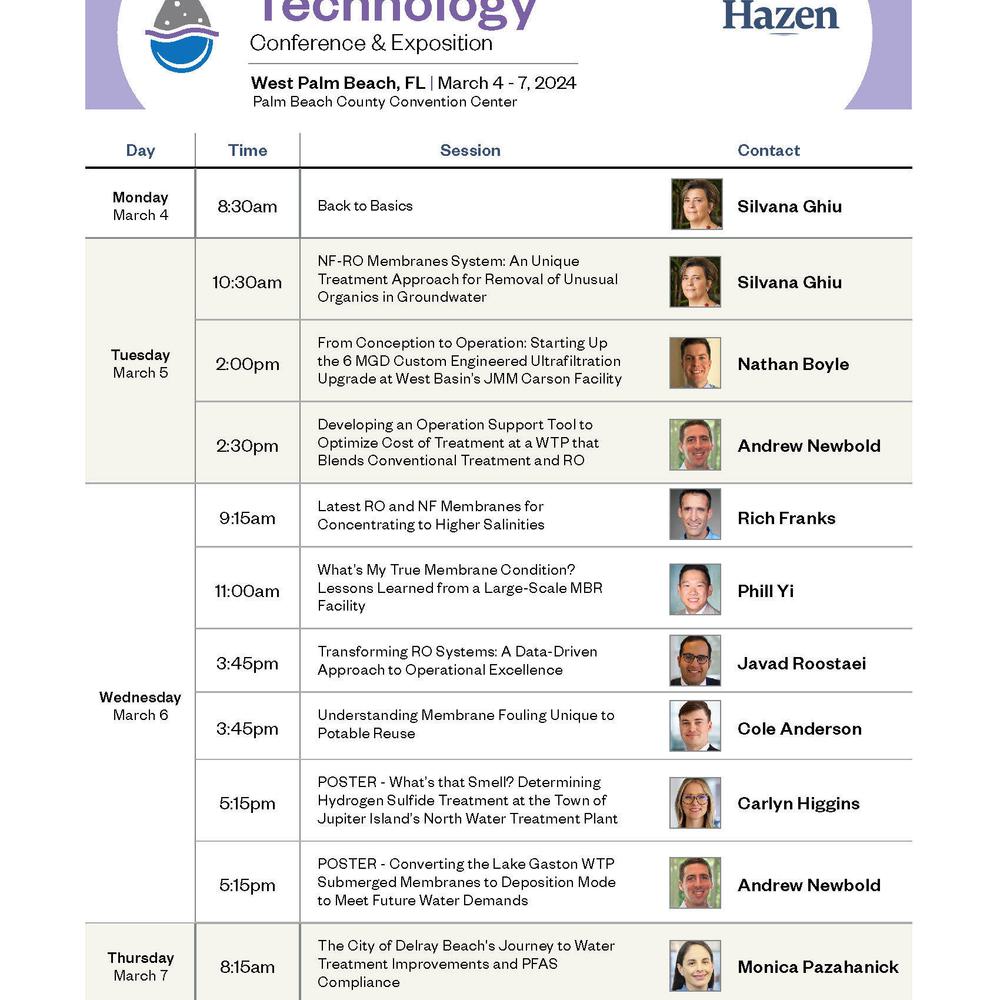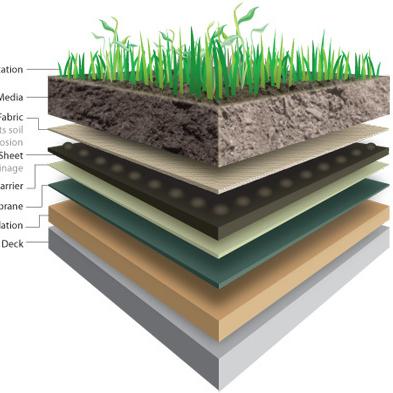Water Reuse for Groundwater Augmentation: State of the Industry
Water reuse is a long-standing and established practice across the US, both from a regulatory and operational standpoint, although drivers for water reuse vary by region. For example, water reuse is typically thought to be motivated by water scarcity, but economic incentives, increasingly stringent environmental discharge requirements, and a desire to match water use with water quality play a significant role in the east. Recent projects along the coastal plain have included the consideration of reuse as part of an overall groundwater resources management program. Whether it is to protect against land subsidence and saltwater intrusion or to augment the volume of water that can be withdrawn from a particular aquifer, the use of reclaimed water in groundwater recharge projects is seeing significant focus.
As utilities in the east are considering reuse for groundwater recharge, it is important to understand the state of reuse regulations associated with the injection of reclaimed water into drinking water supply aquifers. This article provides an overview of the national regulatory environment for water reuse, including the extent of groundwater injection approvals and associated technologies being used as part of these approvals.
Related Topics:
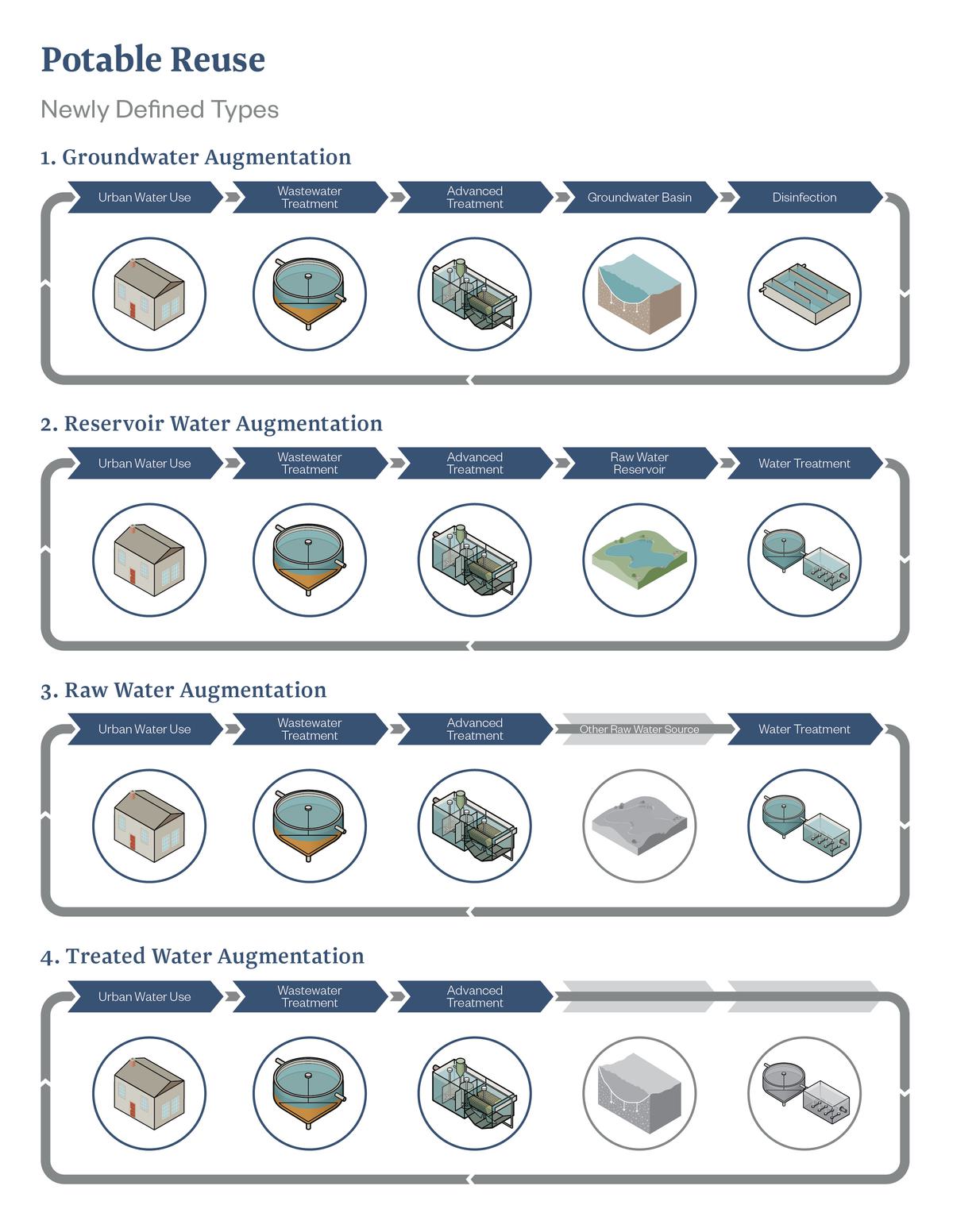
A key aspect of the regulatory environment related to the use of reclaimed water for groundwater injection is treatment requirements and technology. Historically, treatment needs for indirect potable reuse (IPR) projects such as groundwater recharge have relied upon reverse osmosis membrane-based treatment trains to achieve treated water quality goals. This technology can be daunting for many utilities, in terms of operation and brine disposal, which has prompted the evaluation of alternative methods of achieving compliance. Recent projects have focused on non-membrane based treatment trains, such as ozone/biofiltration/granular activated carbon adsorption.
Potable Reuse in the United States
Potable Reuse is not a new concept, and has been practiced deliberately in the United States since at least the mid-1950s. For example, to combat severe drought in the summer of 1956, the City of Chanute in Kansas opened a valve permitting the mixing of treated effluent with water stored in the river channel behind the water works dam. With the addition of chlorination of the effluent, re-chlorination of raw water and additional chlorine monitoring, this recycling venture continued from October 1956 through to March 1957 notably without any public announcement.
California
Commonly referred to as the “Title 22” standards, the standards for water reclamation in California are established under Title 22, Division 4, Environmental Health in the California Administrative Code. First published in 1978 (Erdal Ref), draft regulations broadly regulated groundwater recharge with limited detail, and injection projects were not considered. A 2001 amendment no longer accepted GAC acceptable as the sole organics removal process for subsurface injection, and consequently RO has become a standard process to meet organic requirements.
Further modifications to Draft Groundwater Recharge Regulations occurred over the intervening period, culminating in June 2014 with the release of the Final Groundwater Recharge Regulations. This included specific requirements for the use of reverse osmosis membrane selection criteria including specifically stringent membrane salt rejection requirements. Of particular note, along with the requirement of ≤0.5 mg/L of TOC, the first month of operation of any RO system must demonstrate a TOC concentration no greater than 0.25 mg/L.
As a result of this history of technology application and regulatory development, groundwater injection projects for potable reuse in California almost universally utilize reverse osmosis, and as a consequence microfiltration (or ultrafiltration) as a part of the treatment train.
In addition to groundwater augmentation, California is also in the final stages of developing regulations for surface water augmentation, that is, in the addition of advanced treated recycled water to a reservoir. The Purewater Project in San Diego will be the first of these projects.
Texas
Recently, severe drought required the rapid development of emergency direct potable reuse applications (raw water augmentation) in the cities of Wichita Falls and Big Spring. The Texas Commission for Environmental Quality (TCEQ) developed permits for both facilities on a case by case basis. As for California, the plants permitted so far have required reverse osmosis treatment as a key part of the advanced treatment train. Log removal requirements for microorganisms are slightly lower than for California (8 log virus, 6 log giardia, 5.5 log cryptosporidium) however it should be noted that the starting point for this requirement is secondary treated effluent, not raw sewage as is the case for California.
The City of El Paso has conducted a detailed pilot study to support the development of a long term direct potable reuse system, and at the time of writing, is in early design development of that system.
East Coast
Whereas reuse in the western US states is driven largely by the need for a new water supply, projects on the east coast often have different drivers. The prevalence of east coast reuse has the greatest concentration in Florida, with diminishing implementation as one moves north through Georgia and up into Maryland. Florida has had reuse regulations in place since 1999, with a focus on extending water supplies and protecting sensitive ecosystems by way of land application and groundwater recharge. The focus of reuse in the Mid-Atlantic region has been largely driven by nutrient management concerns and other environmental benefits with increasing exploration and implementation of various reuse applications.
In addition to nutrients, utilities situated along the Coastal Plain aquifer are dealing with many environmental challenges. Aquifer levels are dropping, leading to aquifer consolidation and ground subsidence, not to mention groundwater supply challenges. Coupled with sea level rise and saltwater intrusion, utilities from North Carolina up to New Jersey are facing significant environmental hurdles. For these utilities, water reuse for managed aquifer recharge is a desirable option, particularly those that also maintain wastewater treatment facilities with associated effluent nutrient limits.
Virginia
In Virginia, water reuse is regulated by "Water Reclamation and Reuse Regulation" (9VAC25-740), which establishes treatment standards, monitoring requirements, and acceptable non-potable applications of reuse water. Reuse water that may potentially come in contact with the public must meet the Level 1 standards, whereas isolated reuse applications are only subject to Level 2 standards.
While specific criteria have been established by the Department of Environmental Quality (DEQ) for non-potable reuse, indirect potable reuse is approved and managed on a case-by-case basis. DEQ works in concert with the Virginia Department of Health (VDH) to establish the specific water quality targets that need to be met and the other monitoring parameters of interest. In all cases, source water monitoring and control, environmental buffers/natural attenuation, monitoring and response protocols and treatment to the Level 1 criteria tabulated above must all be incorporated into the multiple barrier approach to the IPR program.
Attention has more recently shifted to the Hampton Roads area in Tidewater Virginia where the Hampton Roads Sanitation District (HRSD) is undertaking a major managed aquifer recharge program. HRSD, one of the Virginia utilities along the Coastal Plain, treats approximately 125 mgd of wastewater for a population of nearly 1.7 million people and is facing substantial upgrade costs to provide sufficient nutrient removal from their wastewater treatment plants. At the same time, unsustainable aquifer withdrawals from the Potomac aquifer have rapidly depleted groundwater resources. While actual permitted withdrawal is below set targets, a large number of domestic unpermitted wells are resulting in over-extraction beyond permitted targets. A compounding impact of this over-extraction is land subsidence due to aquifer compaction which contributes to sea level rise. At the same time, the depleted aquifer is more susceptible to salt water intrusion. The depleted groundwater has also had an impact on water supplies, particularly from the perspective of industrial development in the area.

HRSD has developed and is advancing its SWIFT (Sustainable Water Initiative for Tomorrow) program which provides an innovative solution for addressing these water challenges. The multi-phase SWIFT Program will add advanced treatment processes at up to seven of HRSD’s wastewater treatment facilities to produce water that exceeds drinking water standards and is compatible with the receiving aquifer. At full scale, the SWIFT program will significantly reduce nutrient loading to the sensitive Chesapeake Bay, limit saltwater intrusion into the Potomac aquifer, reduce land subsidence, and provide a sustainable source of groundwater.
In contrast to the treatment processes in California, the treatment process will not utilize a reverse osmosis based process, but rather will focus on a carbon treatment based process. The treatment train was selected based on the water quality and operational impacts resulting from membrane based treatment as compared with carbon based treatment, which were determined via an HRSD pilot program. The SWIFT program is being looked at by other utilities in Virginia but also by those Maryland utilities located along the Coastal Plain that are facing similar nutrient and environmental challenges.

SWIFT significantly reduces nutrient loading to the sensitive Chesapeake Bay.
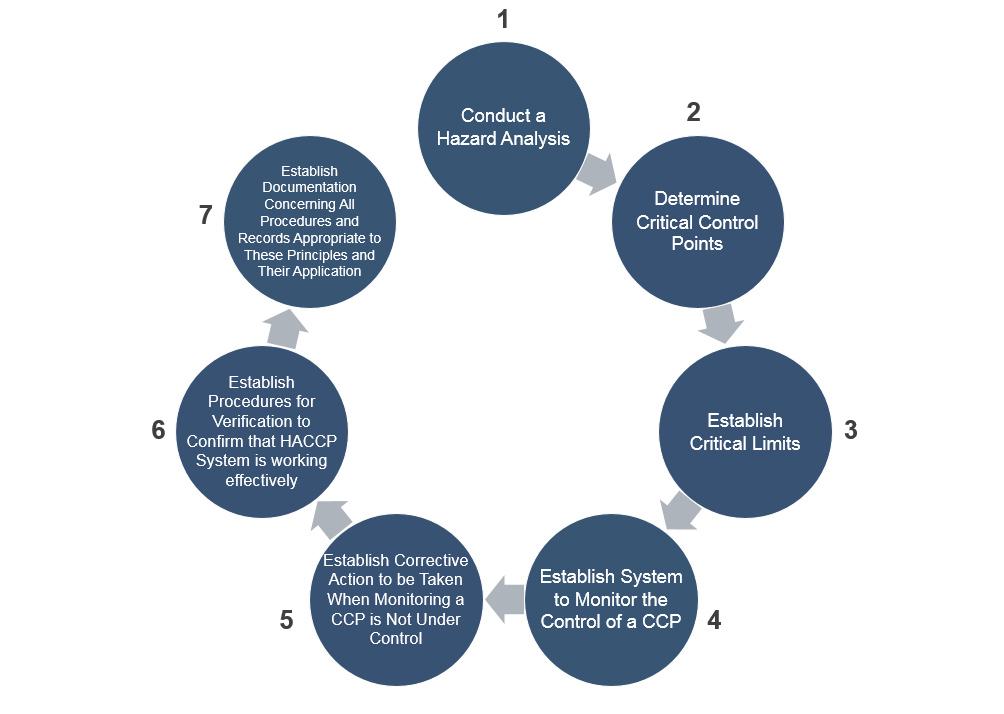
Equivalency of RO versus Carbon Based Treatment Processes
With the carbon based treatment train like that at HRSD being increasingly considered, a number of recent research studies have focused on the equivalency of treatment between the two approaches. Water Environment and Reuse Foundation project 13-03 Critical Control Point Assessment to Quantify Robustness and Reliability of Multiple Treatment Barriers of a DPR Scheme reviewed both an RO treatment process similar to that at OCSD in California, with a carbon based treatment train similar to that at HRSD. Utilizing the Hazard Analysis and Critical Control Point Methodology, a system commonly used in the food industry and increasingly being applied to potable reuse and drinking water applications. HACCP provides a framework for ensuring that the water being produced from a DPR facility is safe and ready for further drinking water treatment or direct blending into a distribution system rather than waiting for end-of-pipe testing to provide a moment-in-time snapshot of the quality of a given sample of water.
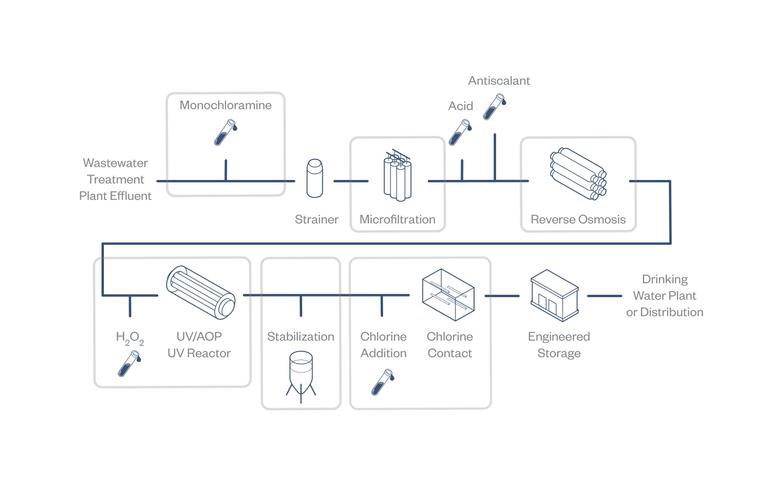

HACCP, or at a minimum the use of CCPs, has been applied at a number of water recycling projects in order to demonstrate the management of microbiological and chemical risk via multiple barrier processes. CCPs are points in the treatment process that are specifically designed to reduce, prevent, or eliminate a human health hazard and for which controls exist to ensure the proper performance of that process.
Based on an analysis of both microbial and chemical water quality risks from literature and operating plant data, CCPs were identified on both treatment trains that could ensure that treated water provided could meet both EPA primary drinking water MCLs as well as the 12 log virus, 10 log giardia and 10 log cryptosporidium removal mandated in California for indirect potable reuse projects.
An additional detailed study including the use of a wealth of full scale data enabled a statistical analysis of each treatment train using Monte Carlo analysis. This also showed both trains to be robust, reliable trains capable of protecting public health. (It should be noted that the carbon based train as shown above will not remove levels of nitrate if they are present in the treated wastewater effluent, but will rely on biological treatment).
Conclusion
Different drivers for water reuse, a different location of facility and different regulatory histories have driven different approaches to technology selection. While well entrenched in California and Texas for potable reuse, the east coast is seeing a trend toward carbon based treatment systems. Although early groundwater systems in California (Montebello Forebay) and Texas (Fred Harvey) did not use reverse osmosis membranes, since the success of OCWD’s reverse osmosis based treatment this has become seen as the best technological solution.
With increasing challenges of brine removal and disposal, especially for inland or environmentally sensitive coastline, coupled with energy challenges, carbon based treatment is increasingly seen as an alternative. The future may even hold the adoption of carbon based systems, or hybrid RO-carbon based systems, in the current stronghold areas of RO.

